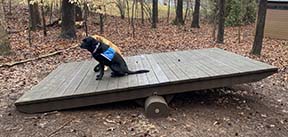1. Principles and practices.¶
The past several weeks I have been exploring WHICH of three ideas I should attempt for my final project. Each idea I considered had its pros and cons. The idea I ultimately chose, was one that most closely aligned to the weekly assignments.Today, I am committing to the “Whale Watch Pressure Sensor Alert System.”
During my career, as an outdoor adventure trip leader, I have taken students rock climbing, caving, kayaking, and backpacking. I have always encouraged participants to leave technology behind. Those annoying portable electronic games, music devices, and certainly cell phones. The intention was to encourage the participants to fully embrace (and hopefully enjoy) the trip’s experience without petty distractions. Over the past 15 years, as a challenge course facilitator (a.k.a. ropes course - team building instructor) I would again encourage participants to leave technology behind, come into the woods for a few hours and engage with fellow participants with no technological distractions.
Crazy enough, lately I have had a slight mind shift in my thought process of “anti-technology” during team building programs. Perhaps it is my acceptance of the new generation of youth needing “electronic” comfort. Their desire to see some sort of technology wherever they are or in whatever they are doing seems too important to ignore. So, I am now exploring how to incorporate technology into challenge course activities.
The “Whale Watch” is an old challenge course team-building activity. Imagine on a playground a seesaw activity where two kids, each sitting on the end of a long board that is attached to a pivot point in the middle.

One child gently goes up while the other returns down. Up and down alternating. Now imagine a similar concept on a challenge course, HOWEVER, it is expanded to allow a group of 12 to 20 participants divided into two sides on an oversized platform (“Whale Watch”). One of the challenges would be to try getting everyone to balance on the platform while attempting to avoid either side from hitting the ground. The Whale Watch tips to one side and will eventually touch the ground. Sometimes it will smash into the ground with a resounding thwack and other times barely noticeable. The instructor (facilitator) has to be the mean~bad person and tell the group the platform touched the ground and they need to start over.
Pics of the real Whale Watch¶



The birth of the idea. What IF I could embrace a technology “distraction” (aka a source of comfort for participants to see technology) AND take away the mean~bad person (me or some other facilitator) telling the group they failed a specific challenge and need to try again. And again. And again. My rough idea is to create an 8 inch long by 6 inch wide and 5 inch high wooden (or plastic) box that would go in the middle of the platform. This box would have pressure sensors wired to the edges of the platform so that when one side of the whale watch touches the ground, a bright LED light flashes and a buzzer chirps to alert the group. MAYBE this alerting device would also have the opportunity to be hooked up to an external electronic device like an iPad that would keep track of the number of touches that occur and which side of the whale watch those touches were occurring on.
This “Whale Watch Pressure Sensor Alert System” could provide the electronic comfort to the participants, save the facilitator from being labeled as the meanie AND raise the bar in having post activity reflective discussions of the group’s problem solving skills. With this electronic tool at the challenge course, those group’s discussion could be based on data collected verses opinions of how well the group worked together as a team. Concrete data does not lie. This device could be pretty darn handy.
See sketch below:
